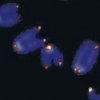- Formiculture.com
- Forums
- Gallery
- Members
- Member Map
- Chat

Light and Ants
Started By
Jonny8040
, Jul 26 2020 5:42 PM
6 replies to this topic
#1
 Offline
-
Posted July 26 2020 - 5:42 PM
Offline
-
Posted July 26 2020 - 5:42 PM
Hey guys!
I was wondering if not covering an ant colony could result in the queen being stressed and not laying eggs. I had a crematogaster queen in a tube until I finished her founding nest and she laid eggs without being covered and my light being turned off and on a lot and she is doing great. But some colonies tend to go a little crazy when they see light. Would they get used to being uncovered or is it too much stress?
Thanks!
In Jesus,
Jonny
I was wondering if not covering an ant colony could result in the queen being stressed and not laying eggs. I had a crematogaster queen in a tube until I finished her founding nest and she laid eggs without being covered and my light being turned off and on a lot and she is doing great. But some colonies tend to go a little crazy when they see light. Would they get used to being uncovered or is it too much stress?
Thanks!
In Jesus,
Jonny
In Jesus,
Jonny
Jonny
#2
 Offline
-
Posted July 26 2020 - 5:44 PM
Offline
-
Posted July 26 2020 - 5:44 PM
It depends on species. My Camponotus are uncovered and they don't seem to be bothered by light. But my lasius really don't like light.
He travels, he seeks the p a r m e s a n.
#3
 Offline
-
Posted July 26 2020 - 6:13 PM
Offline
-
Posted July 26 2020 - 6:13 PM
I agree!
In Jesus,
Jonny
Jonny
#4
 Offline
-
Posted July 26 2020 - 6:21 PM
Offline
-
Posted July 26 2020 - 6:21 PM
Crematogaster don’t care about light at all. I think most wood nesting ants don’t.
"The ants are a people not strong, yet they prepare their meat in the summer." Prov. 30:25
Keep ordinary ants in extraordinary ways.
Keep ordinary ants in extraordinary ways.
#5
 Offline
-
Posted July 26 2020 - 11:19 PM
Offline
-
Posted July 26 2020 - 11:19 PM
My Pheidole hate, and I mean HATE HATE HATE HATE light. While my C. Vicinus don’t care if I shine one or a hundred lights, they act like nothing is different. So I would concur that wood nesting ants (and stuff similar like Campontous spp.) don't care for light.
My Ants:
(x1) Campontous semitstaceus ~20 workers, 1 Queen
(x1) Camponotus vicinus ~10 workers, 1 Queen (all black variety)
(x1) Tetramorium immigrans ~100 workers, 1 Queen
(x1) Myrmercocystus mexicanus -1 Queen
(x2) Mymercocystus mimcus -1 Queen
(x1) Mymercocystus testaceus ~45 workers, 1 Queen
(x1) Campontous semitstaceus ~20 workers, 1 Queen
(x1) Camponotus vicinus ~10 workers, 1 Queen (all black variety)
(x1) Tetramorium immigrans ~100 workers, 1 Queen
(x1) Myrmercocystus mexicanus -1 Queen
(x2) Mymercocystus mimcus -1 Queen
(x1) Mymercocystus testaceus ~45 workers, 1 Queen
#6
 Offline
-
Posted July 27 2020 - 4:22 AM
Offline
-
Posted July 27 2020 - 4:22 AM
My Pheidole morrisii hate light too. Whenever I check on them they run around and open their jaws.
Ants I have: Tapinoma sessile(2 queen colony). RED MORPH Camponotus neacticus(now has pupae!), Tetramorium immigrans (x3), Aphaenogaster sp, Temnothorax sp, Brachymyrmex sp. possibly infertile ![]() , Ponera pennsylvanica, and Pheidole morrisi!
, Ponera pennsylvanica, and Pheidole morrisi! ![]()
Other insects: Polistes sp. Queen
Ants I need: Pheidole sp., Trachymyrmex sp., Crematogaster cerasi , Dorymyrmex sp. Most wanted: Pheidole morrisii
#7
 Offline
-
Posted July 27 2020 - 8:44 AM
Offline
-
Posted July 27 2020 - 8:44 AM
I think I saw Mack of THA say his ants are left uncovered, no red filter, etc.
Actually right now ALL of mine are too. I tend to leave them in the dark when founding, though. Once they have workers they get the rude shock of having tubes stuck in open-top bins in a busy room. Of course, Tetramorium fight back by covering the windows with sand.
Formiculture Journals::
Veromessor pergandei, andrei; Novomessor cockerelli
Camponotus fragilis; also separate journal: Camponotus sansabeanus (inactive), vicinus, laevigatus/quercicola
Liometopum occidentale; Prenolepis imparis; Myrmecocystus mexicanus (inactive)
Pogonomyrmex subnitidus and californicus (inactive)
Tetramorium sp.
Termites: Zootermopsis angusticollis
Isopods: A. gestroi, granulatum, kluugi, maculatum, vulgare; C. murina; P. hoffmannseggi, P. haasi, P. ornatus; V. parvus
Spoods: Phidippus sp.
1 user(s) are reading this topic
0 members, 1 guests, 0 anonymous users


















